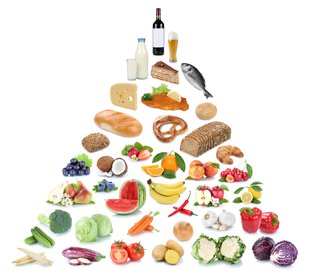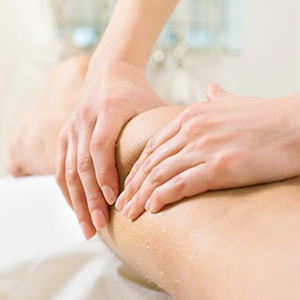Lipedema and Diet
Dietary change can improve the condition
There are many questions surrounding the subject of nutrition and lipedema: can lipedema be treated with the right nutrition? Can the condition in fact be possibly cured with the right nutrition? Or is there a “wrong” nutrition for lipedema patients?
It is a fact that unhealthy nutrition and obesity can worsen the edema. Conversely, fewer pounds mean fewer complaints (1). However, nutrition and diet alone cannot cure lipedema. But: healthy nutrition and a normal weight are important for greater personal well-being.
Which nutrition with Lipedema?
A healthy diet is important. Through our food intake we supply our body with all the necessary nutrients. But unfortunately not everything that tastes good is also healthy. In the case of many types of disease the right nutrition plays a crucial role. Similarly with lipedema. Unhealthy eating habits can lead to fat depots increasing more and more.
Among experts two concepts are mentioned again and again where lipedema and nutrition are concerned: isoglycemic (in simple terms: low glycemic) and ketogenic nutrition.
Behind both nutritional concepts there is one thought: with dietary change the body should be made to use the existing fat reserves as a source of energy and boost fat burn. In the following we would like to briefly explain the idea behind glycemic and ketogenic nutrition.

Low glycemic nutrition
Low glycemic nutrition aims to avoid blood sugar and insulin peaks. The basic idea is as follows: if the blood sugar level is permanently raised, this promotes the development of obesity and diabetes.
It is a vicious circle: food with a high glycemic value causes the blood sugar level to rise enormously and thus also boosts insulin secretion. As a result, fat burn slows down while at the same time it fuels a craving for food. Food with low glycemic content on the other hand satiates for a longer period of time, keeps the insulin level down and the body falls back on the fat reserves as a source of energy.
With low glycemic nutrition food with low glycemic content, such as eg most vegetables, is preferred. However, white bread and fried chips eg should be avoided. The principle is known from both the diabetes and the so-called GLYX diet.
But please note! New studies have shown that the blood sugar level after eating varies from person to person. The level is inter alia dependent on age and BMI. But also other factors seem to affect blood sugar. Therefore, the glycemic index should, strictly speaking, be individually determined for each person. Current food tables, however, offer an initial orientation.
Ketogenic nutrition
Ketogenic nutrition sets out to dramatically reduce carbohydrates – similar to the well-known “Low Carb” diet, only initially even more aggressively. The basic idea is as follows: carbohydrates can be very easily transformed into energy. If few carbohydrates are present, the body must gain energy from other sources. As a result of carbohydrate deprivation the body should be stimulated not to continue storing fat but use it as a source of energy and thus switch it into fat metabolism.
At the same time the protein supply should be adjusted to individual requirements in order to maintain muscle mass. However, protein requirements vary, depending on physical activity and age.
Positive side effects of ketogenic nutrition: the secretion of insulin is – in total conformity with low glycemic nutrition – very much reduced and physical as well as mental performance increase!
Ideas for tasty recipes can be found on various recipe portals.
Help with dietary change
Dietary change requires discipline, as it means breaking with old habits and starting new ones. For lipedema patients it can be all the more difficult, as success in the known problem areas is only visible to a limited extent. With both glycemic and ketogenic nourishment one has to deal intensively with the subject of nutrition and the significance and value of different types of food. Nutritional counselling with a professional will provide insight. As in the case of lipedema patients also further factors, such as eating disorders, may have to be taken into account, nutrition therapy under professional guidance can make sense.
(1) Faerber G. Ernährungstherapie bei Lipödem und Adipositas – Ergebnisse eines leitliniengerechten Therapiekonzepts. Vasomed 2017; 29:176-177.





